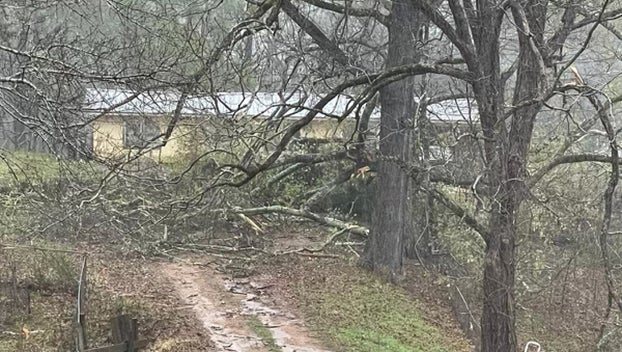Drought bares mean side of Mississippi River
Published 12:16 am Sunday, August 26, 2012
GREENVILLE (AP) — Another day, another sandbar to clear on the clogged Mississippi River.
It’s a routine that’s settled in as the drought in the nation’s central states leaves the river without the rainfall that is its lifeblood. The river is fed by the third-largest watershed in the world — a large chunk of the U.S. and part of Canada — and drought in that area means lower water along the river. That can put a major hurting on industries that use the river to ship hundreds of millions of tons of products, from grain to gasoline, every year.
One estimate put barge industry losses at $1 billion the last time the river was this low, in 1988. That’s why dredges, which knock down shallow spots and clear the shipping channel, are so vital in times like these. Shallow spots have already shut down the river at times this year, and the U.S. Army Corps of Engineers has asked to close it again for about 12 hours on Monday, this time for dredging near Baton Rouge.
Aboard the Dredge Jadwin, a massive-four story hulk that’s working around the clock to clear channels at Greenville, crews are pumping enough material from the river bottom every day to cover a football field 40 feet deep with sand and Mississippi mud.
Dredging is a way of life on the river, because its upstream tributaries wash enormous amounts of silt each year down to the Gulf of Mexico.
But veterans like the Jadwin’s quality control officer, Bobby Justice, say they’ve never seen the river quite like this.
“This year we’re dredging in spots we usually don’t,” he said.
The dredge worked for just over a week to deepen the channel north of Greenville and widen it at one of the river’s many bends. It then moved a few miles downriver to another trouble spot where a barge ran aground this week, temporarily shutting down the river.
Pointing to a sandbar that stretches from the water’s edge out about a half mile, Justice shook his head.
“You’re seeing sand right there that hasn’t been visible since 1988,” the last time the river was this low.
It isn’t just the sand and mud that are creating a nervous vigil at the river.
Navigation markers that mark channels require constant adjustment to keep towboats and barges out of trouble zones. The buoys get displaced either by ships or the shifting river itself.
The strain on crews and machinery is considerable — two of the 50-year-old buoy tenders that work the river from Louisiana to Missouri have been down for repairs, said Coast Guard Capt. William Drelling.
“It adds a challenge,” he said.
Kavanaugh Breazeale, spokesman for the Army Corps of Engineers, said the corps is fighting money problems as well as the river. The corps is using emergency funds but is working on a tight budget because of the expense of dealing with last year’s Mississippi flood.
Last year, homes were flooded even as crews worked feverishly to keep levees holding back the water. One stretch of levee was lined with heavy plastic sheets to keep it from eroding if water topped the levee. The water got close, but it didn’t top that levee.
This time around, the situation is different. But the task at hand is also difficult.
Lives aren’t at risk, but any time a section of the river closes temporarily — as it has several times in August — or barges have to carry lighter loads of grain, there’s the potential for affecting consumers at home and abroad.
“The immediate impact is on the Coast Guard, the Corps of Engineers and industry, the people that work the river.” Drelling said. “The impact on the public will be economic in the long haul.”
Breazeale said the corps has three dredges similar to the Jadwin, each assigned to a different district from Mississippi to Missouri, and has another type of dredge in lower Louisiana. The corps also has recently awarded contracts for private operators to dredge river ports.
The most recent contract, for $5.6 million, was awarded Wednesday to Great Lakes Dredge and Dock Co. of Oak Brook, Ill., and calls for work to begin within 15 days.
Port of Greenville director Tommy Hart has been making the case that his port should be the first one, and he said he hopes work begins as soon as possible. The barges in his port are carrying lighter loads so they don’t sit as deep in the water, but that has cut down the equivalent of about 20 barge loads a day in Greenville. The port handles incoming loads like fertilizer and fuel and sends out goods like soybeans, corn and rice.
“With the lighter loads, it takes four barges to ship what three did,” Hart said. “The mission is to keep commerce moving, whatever you have to do. … It will keep moving. It may be slower on occasion, but it will keep moving.”
The river is one of the most vital routes for commerce in the country. In a good year, barges can ship up to 500 million tons of goods up and down the river. That includes 60 percent of the grain grown in the U.S., said Bob Anderson, a corps spokesman.
For the long haul, the combined might of machines and human effort relies on one ultimate game-changer: rain in the Midwest.
For Justice and his colleagues, the wait could be a long one.






